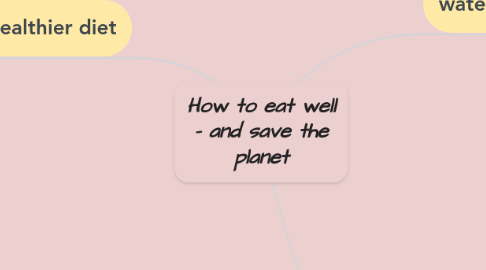
1. water footprints
1.1. The water footprint is a measure of humanity’s appropriation of fresh water in volumes of water consumed and/or polluted.
1.1.1. Green water footprint
1.1.1.1. water from precipitation that is stored in the root zone of the soil and evaporated, transpired or incorporated by plants.
1.1.1.2. It is particularly relevant for agricultural, horticultural and forestry products.
1.1.2. Blue water footprint
1.1.2.1. industry and domestic water use can each have a blue water footprint.
1.1.2.2. water that has been sourced from surface or groundwater resources and is either evaporated, incorporated into a product or taken from one body of water and returned to another, or returned at a different time. Irrigated agriculture.
1.1.3. Gray water footprint
1.1.3.1. the amount of fresh water required to assimilate pollutants to meet specific water quality standards.
1.1.3.2. The grey water footprint considers point-source pollution discharged to a freshwater resource directly through a pipe or indirectly through runoff or leaching from the soil, impervious surfaces, or other diffuse sources.
2. Promblem about water
2.1. less freshwater
2.2. population growth
2.3. changing lifestyle
2.4. climate change
2.5. food consumption
2.5.1. UK - 2757 litres - person/day
2.5.2. France - 3861 litres - person/day
2.5.3. Germany - 2929 litres - person/day
3. switch to a healthier diet
3.1. reduce an individual's water footprint
3.1.1. win-win situation
3.1.1.1. envorionment
3.1.1.2. health
3.2. turn to healthy diet
3.2.1. Vegetarian
3.2.1.1. reduces water consumption by 35-55%.
3.2.1.2. no fish or meat, oils from crops in place of animal fat
3.2.2. a healthy pescetarian diet
3.2.2.1. reduces water consumption by 33-35%
3.2.2.2. meat is replaced with fish and pulses, animal fat is replaced with oils from crops
3.2.3. Switching to a healthy diet with meat
3.2.3.1. reduce water consumption by 11-35%
